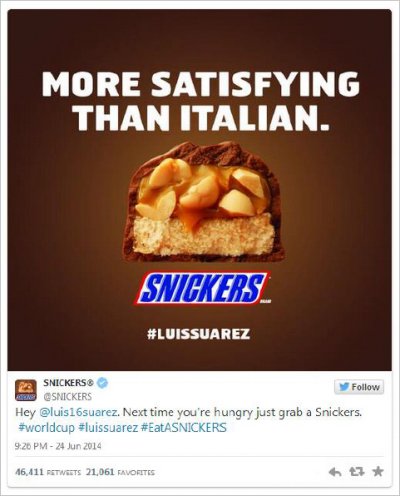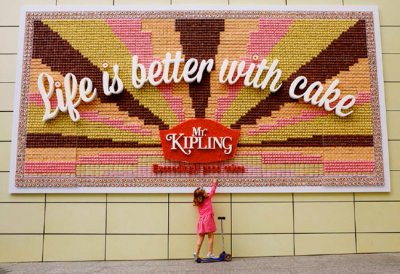The APG Creative Strategy Awards went live on warc.com today. These awards recognise the central role of planning and are dedicated to inspiring the exchange of ideas and expertise on how business can benefit from creative thinking. Or in other words, they celebrate the 'lightbulb' moment. This Girl Can, a campaign devised by FCB Inferno for Sport England, won the Grand Prix and I've dug deep into the 60-strong case studies to showcase campaigns that demonstrate how to overcome a variety of marketing challenges.
Three, a British mobile operator, wanted to raise awareness, increase customers and reduce churn. Operating in a highly competitive sector, Three identified a unique opportunity that would differentiate it from its competitors. Breaking with the category norm, Three offered mobile users free roaming data while overseas. And rather than promote the offering in a rational way the campaign adopted a humourous and UGC approach. Three reached 9.8 million customers and achieved a 13.1% market share, an all time high.
Snickers: Making the world your creative department
Snickers, the confectionery brand, identified the feeling of hunger as an idea that would have universal appeal and thus have the ability to translate across countries and cultures. Humour was at the heart of this multi-national campaign which had an agile marketing element whereby the brand responded to various cultural events in real time.

Want to know about the UK car buyer's path to purchase? This case study features excellent insight on the complex and lengthy customer journey that typically involves conducting online research, visiting dealerships and test drives. Read on if you want to know the average time it takes a person to buy a car or the number of different sources they consult...
Moneysupermarket: A guide to feeling epic
For brands that aspire to 'own' an equity or a feeling, see how MoneySupermarket, a UK price comparison website, made people 'Feel Epic'.
Tena Men: The Final Y-Frontier
Here’s a unique brand challenge: how do you sell incontinence pads to men? Tena Men, a UK incontinence product, overcame target audience resistance with a campaign spearheaded by brand character, Sterling Gravitas, who used humour and his own Twitter feed to raise awareness of the issue and the solution.
For seasonal brands that have peak sales at particular times of the year, increasing usage occasions can be very challenging. With 80% of its sales made in the summer months, Pimm's, the gin-based drink owned by Diageo, had limited growth prospects. This case study describes how one planner identified a gap in the market and made it her mission to broaden consumption occasions by pairing the drink with the UK’s favourite meal - a curry.
Telefonica: How O2 found its inner dog
O2, a communication services company in the UK, shows how its 'Be More Dog' rebranding campaign led to an increase in sales and brand awareness. The case study also outlines how O2 instilled a particular ethos within the company culture.

Always #LikeaGirl: Changing the meaning of words to make girls proud to be girls
Always, the feminine hygiene brand, shifted from a functional to emotional positioning through its 'Like A Girl' campaign which championed women's self confidence. An online video that highlighted negative stereotypes about what it is to be a girl was at the heart of this campaign. It went on to be aired during the 2015 Super Bowl. The footage went viral, igniting a global conversation about female empowerment.
This case study for RAID, an American pest control brand, explains how planning helped bring an analogue brand - and a dull category - into the digital age. SEO, social media and an interactive microsite were central to this campaign. The site featured over 40 how-to videos and a robust Q&A section that provided helpful information and solutions. The 'utility' marketing strategy worked. Despite the category declining by 3%, the campaign increased sales, share and buy rate, and moved share of voice in search keywords from 42% to 94%
Royal Navy: Made in the Royal Navy
The Royal Navy utilised Google Cardboard, the virtual reality platform, to enable potential Royal Navy recruits to experience virtually a day in the life aboard a Navy ship. The VR app was also used by Converse, the iconic footwear brand.
If you're interested in behavioural and attitude change campaigns see how Scope, a UK disability charity, used humour and education to challenge perceptions and change attitudes about disability. Elsewhere, Scottish Widows, a UK financial services and pension brand, put behavioural economics and the concept of 'Temporal Discounting' at the heart of its strategy to encourage consumers to shift from 'now bias' thinking to one that would focus on the benefits of having a financial plan for tomorrow.
A recipe for change: How Uncle Ben's got the nation's families cooking together again
This case study for Uncle Ben's, the food brand, shows how an online 'Saturday Shows' video series helped it reach a dual audience of parents and children in the UK. The instructional video series featured recipes based on meals that would appeal to both target audiences. Uncle Ben's YouTube channel was the lead media and the campaign also had an educational element as it highlighted a selection of basic skills. So far, the campaign has been viewed 7.6m times.
From insights to axioms: How planning changed the role of Mr. Kipling
I highlight this case study for Mr Kipling, a British baking company, to showcase its use of innovative outdoor media in the form of an edible poster!

World Animal Protection: Before they book
World Animal Protection, an animal rights charity in the UK, embarked upon a clever search marketing strategy to raise awareness of the suffering that animals endure in the name of entertainment. The strategy focused on a specific audience (tourists about to travel to Asia), at a specific time (tourists searching for elephant rides) with the aim of influencing their behaviour. Strategic use of Google AdWords, social media and PR led to the campaign being shared over 35,000 times.
Making the unbelievable possible for Pepsi Max
Pepsi Max, a soft drinks brand, embarked upon a digital first campaign in an attempt to take on a larger rival and boost brand equity and business results in the UK. It created YouTube content aimed at a target audience of 18 to 34-year-old men that focused on 'unbelievable' and heroic human feats. The campaign generated over 43m views and saw improvements in brand equity measures.
As always Warc subscribers can view the full case studies here.
